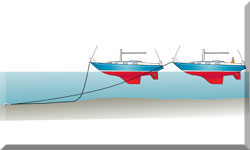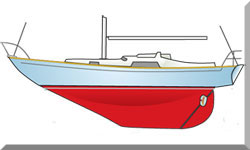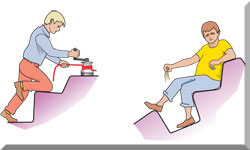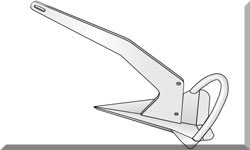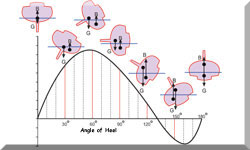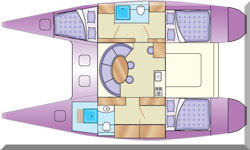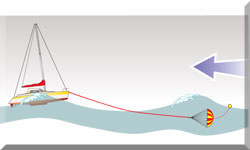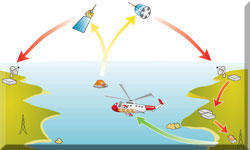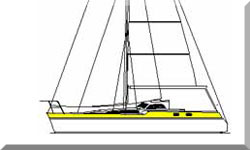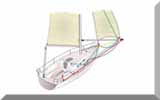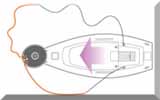- Home
- Sail Measurements I P J E
How Does a Yacht Designer Decide on the Sail Measurements I, P, J & E?
Deciding on the measurements I, J, P, and E is like orchestrating a symphony for a yacht's performance and personality. Yacht designers carefully balance these dimensions to craft a sail plan that harmonizes speed, handling, aesthetics, and safety. Let's delve into how these critical measurements are determined, shaping the very essence of a sailboat.
Understanding the Sail Plan Geometry
1. Defining the Yacht's Purpose
The journey begins by clarifying what the yacht is meant to do:
- Cruising vs. Racing: A cruising yacht prioritizes comfort and ease of handling, often featuring a smaller, more manageable sail plan. In contrast, a racing yacht pushes the boundaries with larger sails to maximize speed and performance.
- Intended Sailing Conditions: Designers consider typical wind conditions and sea states the yacht will encounter. A yacht sailing in consistently light winds may benefit from larger sails.
2. Balancing Hull Design and Stability
The hull and rig must work in unison:
- Hull Shape and Displacement: The hull's design influences how much sail area the yacht can safely carry. A wider, heavier boat can handle larger sails without excessive heeling.
- Righting Moment: Designers calculate the yacht's ability to resist heeling (tipping sideways) under sail. This determines the maximum sail area before the yacht becomes overpowered.
3. Performance Goals
What kind of ride are we aiming for?
- Speed and Agility: Desired speed, acceleration, and handling characteristics influence sail dimensions. Larger sails enhance power but may require more skill to manage.
- Upwind vs. Downwind Performance: The balance between mainsail and headsail areas affects performance on different points of sail.
Determining Each Measurement
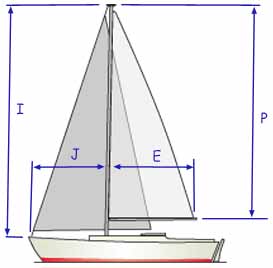
P (Mainsail Luff Length)
This is the vertical length of the mainsail along the mast.
- Setting the Height: Designers decide how tall the mainsail should be based on desired power and mast height limitations. A taller mainsail can catch stronger winds aloft.
- Aspect Ratio Considerations: Adjusting P in relation to E affects the sail's aspect ratio (height vs. width), influencing aerodynamic efficiency.
E (Mainsail Foot Length)
This is the horizontal length of the mainsail along the boom.
- Boom Length Decisions: The length of the boom impacts cockpit space and sail control. A longer E increases sail area but may intrude into the cockpit.
- Balancing with P: Designers tweak E to achieve the desired aspect ratio and handling characteristics.
I (Foretriangle Height)
This is the height from the deck to where the forestay attaches to the mast.
- Headsail Size Influence: A greater I allows for a larger headsail, contributing to power, especially in lighter winds.
- Rig Type Impact: In fractional rigs, the forestay attaches lower on the mast, reducing I and headsail size but enhancing mainsail dominance.
J (Foretriangle Base Length)
This is the horizontal distance from the mast to the forestay's deck attachment at the bow.
- Determining Foretriangle Shape: J affects the headsail's base width. A larger J results in a bigger headsail, impacting upwind performance.
- Mast Placement: Shifting the mast forward or aft alters J, influencing sail balance and trim.
The Design Interplay
Designing these measurements is an art of balance. Changing one dimension affects others, and the designer must consider:
- Center of Effort Alignment: Ensuring the combined center of effort of the sails aligns properly with the keel and rudder for balanced handling.
- Heeling and Stability: Balancing sail area against the yacht's ability to stay upright and comfortable.
Visualizing the Process:
Yacht Purpose >>> Hull Characteristics >>> Sail Plan Design >>> Wind Conditions >>> Stability >>> I, J, P, E Selection
Metaphorical Insight
Think of designing these measurements as tailoring a suit:
- Measurements (I, J, P, E): The fabric dimensions must fit the body (hull) perfectly.
- Style and Function: The cut (sail shape) must suit the occasion—sleek for racing or comfortable for cruising.
Adjustments: Every alteration affects the overall fit and appearance, requiring careful consideration.
Influencing Factors
Crew Capability
- Shorthanded Sailing: For small crews, simpler rigs with smaller sails are easier to manage.
- Full Crew Racing: Larger crews can handle more complex sail plans and bigger sails for maximum performance.
Technological Advances
- Materials: Modern sail fabrics and lightweight mast materials allow for larger sails without compromising stability.
- Sail Handling Systems: Innovations like roller furling and in-mast furling impact decisions on sail size and manageability.
Aesthetics
- Proportional Elegance: The yacht's appearance matters. Designers strive for a harmonious silhouette, balancing mast height and sail area with hull size.
Regulatory Considerations
Class Rules and Ratings
- Racing Regulations: Measurements may be adjusted to comply with racing class rules, which can penalize excessive sail areas.
Safety Standards
- Mast Height Restrictions: Air draft limitations under bridges or airspace restrictions can affect P and I.
Iterative Design Process
Designing a sail plan involves:
- Initial Concepts: Based on desired performance and aesthetics.
- Computer Modeling: Simulating how changes in I, J, P, and E affect performance.
- Testing and Refinement: Adjusting measurements through feedback from prototypes or scale models.
Beyond the Numbers
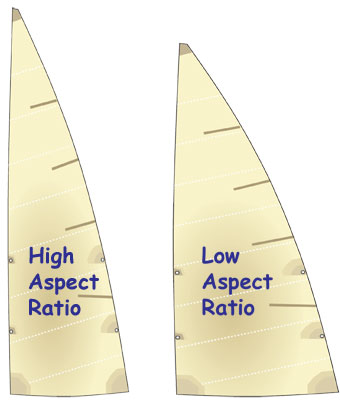
Aspect Ratio Impacts
- High Aspect Sails: Tall and narrow sails are efficient upwind but may be less stable.
- Low Aspect Sails: Shorter and wider sails offer more power downwind and are generally more stable.
Center of Effort and Lateral Resistance
- Balance for Control: Proper alignment minimizes unwanted helm pressure and improves handling.
Final Thoughts
Deciding on I, J, P, and E is a nuanced process that blends engineering precision with creative vision. Yacht designers consider a tapestry of factors—from the owner's aspirations to the physics of wind and water—to sculpt a sail plan that brings the yacht to life.
Sailing into the Future
- Environmental Considerations: Sustainable materials and design efficiencies are increasingly important in modern yacht design.
- Emerging Technologies: Innovations like wing sails or hydrofoils could redefine traditional measurements.
Recent Articles
-
Hans Christian 43: Classic Bluewater Cruiser & Liveaboard Sailboat
Dec 10, 25 04:37 AM
Explore the Hans Christian 43: a legendary heavy-displacement, long-keel sailboat. Read our in-depth review of its specs, design ratios, and suitability for offshore cruising and living aboard. -
Planning Your Sailboat Liveaboard Lifestyle: An Ocean Sailor's Guide
Dec 06, 25 05:18 AM
Seasoned sailors share their methodical risk analysis for planning a secure Sailboat Liveaboard Lifestyle, covering financial, property, and relationship risks. -
Marine Cabin Heaters: The Expert’s Guide to Comfort & Safety at Sea
Dec 05, 25 06:52 AM
Choose the best Marine Cabin Heaters for your vessel. Expert advice on diesel, paraffin, and hot water systems for year-round cruising comfort.

